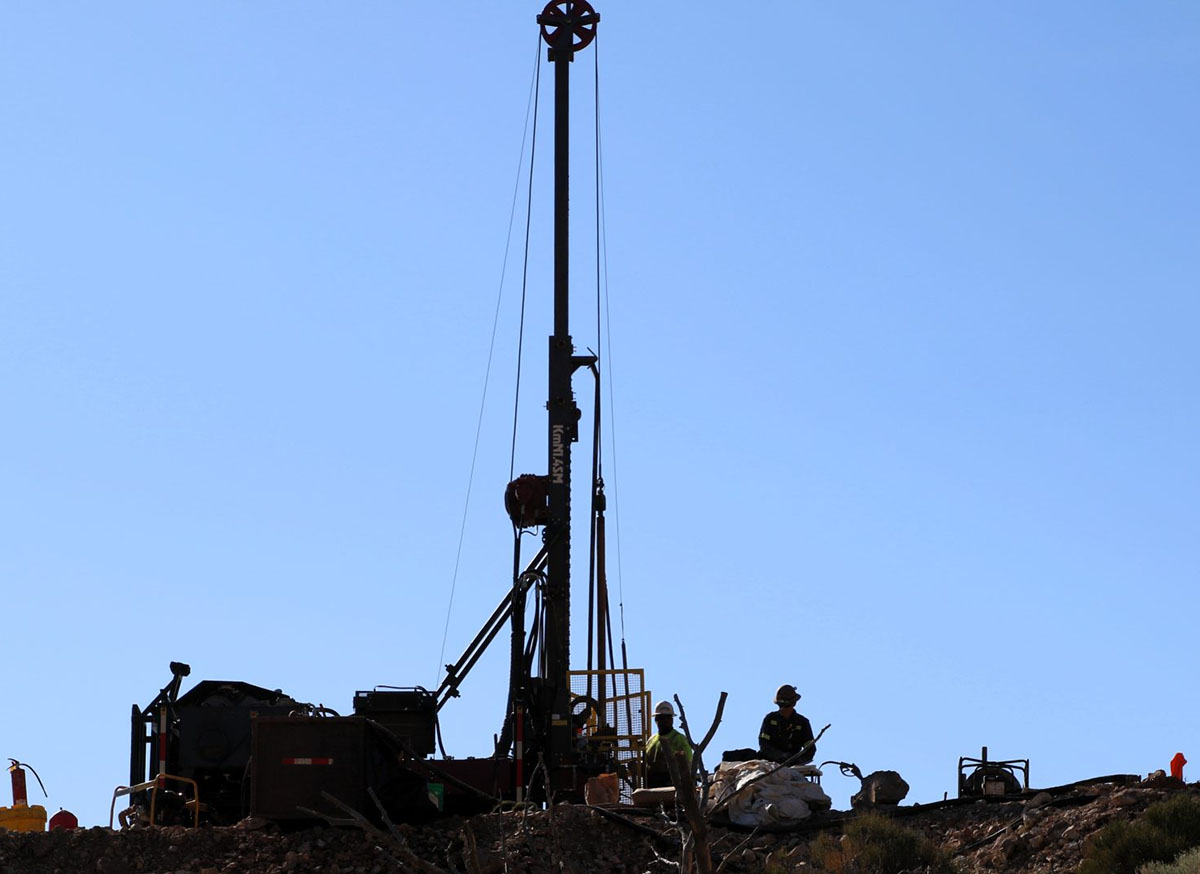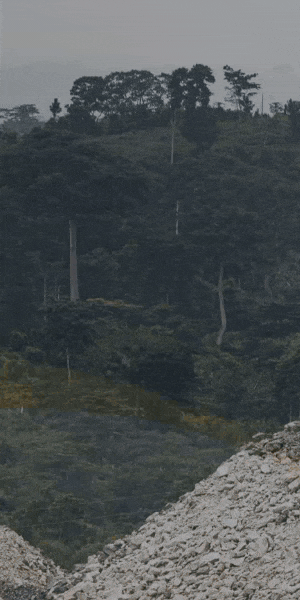Hawk Resources Advances High-Grade Cactus Copper-Gold Project Toward December Drilling in Utah

Hawk Resources drilling high-grade Utah copper-gold project Dec 2025; historic 2% Cu grades, 42m at 1.9% Cu intercepts. Results Q1-Q2 2026. Scandium project adds optionality.
- Hawk Resources is advancing the Cactus copper-gold project in Utah toward December 2025 drilling, targeting five high-grade prospects near a historic mine that produced 1.3 million tons at 2% copper and 0.3 g/t gold between 1905-1920
- Historical drilling has delivered impressive intercepts including 42m at 1.9% copper and 0.6 g/t gold, with multiple holes exceeding 1.4% copper, providing strong geological confidence for the upcoming drill program
- The company has identified both deep geophysical targets and near-surface oxide mineralization opportunities, offering potential pathways to quick cash flow alongside longer-term resource development
- Recent acquisition of the Olympus scandium project in Western Australia provides significant optionality, with a 4km x 7km soil anomaly grading over 500ppm scandium and RAB drilling returning 11m at 934ppm scandium
- The company recently raised A$5 million to fund systematic drilling at Cactus, with permitting expected by end-November and initial assay results anticipated in Q1 2026
Hawk Resources (ASX:HWK) is positioning itself at the intersection of two compelling commodity themes: the structural copper deficit driven by electrification and the emerging scandium market for aerospace and advanced materials. Managing Director Scott Caithness, who brings experience from Rio Tinto and Century Mines to the junior exploration sector, recently detailed the company's strategic focus on its flagship Cactus copper-gold project in Utah and the newly acquired Olympus scandium project in Western Australia. With drilling set to commence at Cactus in December 2025 and a clear pathway from exploration to potential near-term production, Hawk presents an interesting proposition for investors seeking exposure to both established and emerging critical minerals.
The Cactus Project: Historic Production Meets Modern Exploration
The Cactus project in Utah occupies a historically productive mining district that has seen limited systematic exploration since the early 20th century. The original Cactus mine operated between 1905 and 1920, extracting approximately 1.3 million tons at an impressive grade of 2.0% copper with gold credits of 0.3 grams per ton and 6-7 grams per ton silver. The district contains multiple historic deposits including Comet, New Years, Purity, and Colburn, spread across a 1-2 kilometer corridor.
"The old cactus mine itself mined about 1.3 million tons at just over 2% copper with about 0.3 g per ton gold credit and also about 6-7 grams per ton silver. So it was quite a good grade."
It establishes the geological potential that has drawn modern exploration attention back to the district.
Historical drilling conducted primarily in the 1960s has returned exceptional intercepts that would be considered economic by today's standards. One particularly notable hole intersected 5 meters at 6.7% copper within broader zones of 20-40 meters at 1-1.5% copper. More recent work by Rio Tinto, which farmed into the project before returning it to Hawk, intersected 42 meters at 1.9% copper and 0.6 g/t gold within a larger 70-meter intercept grading 1.1% copper and 0.3 g/t gold. Approximately 12-13 historical drill holes have returned mean sections greater than 1.4% copper, with several exceeding 3% copper. The gold component adds significant value to the project's economics.
A Dual-Track Exploration Strategy
Hawk has developed a sophisticated two-pronged exploration approach at Cactus that addresses both near-term cash flow opportunities and larger-scale resource potential. The company has completed comprehensive geophysical surveys (IP - Induced Polarization) across the district and integrated this with systematic soil sampling - the first company to conduct such work over the known targets.
The company has identified five priority targets based on the integration of geophysical anomalies, surface geochemistry, and historical drilling. These targets fall into two categories: deeper geophysical targets that could represent significant new discoveries, and near-surface extensions of known mineralization that could provide rapid development opportunities.
"We've identified five targets at Cactus which we're about to start drilling. So we're going to be drilling at Cactus within December."
The geophysical program has revealed both resistivity low anomalies (similar to the known Cactus mineralization) and chargeability high anomalies that suggest different styles of mineralization. The Copperopolis target exemplifies the scale potential, with soil samples returning up to 1,000 ppm copper (compared to district background of 60 ppm) sitting above a massive geophysical anomaly. A historical hole drilled off the edge of this anomaly in 1974 intersected 30 meters at 0.2% copper, but the core of the target remains untested.
Validation and Systematic Approach
One of Hawk's key strengths is its systematic approach to validating historical data before committing significant capital to deeper drilling. The company conducted verification drilling at the New Years prospect in late 2024, confirming the historical results and extending the known mineralization. This work returned intercepts of up to 30 meters at 1.3% copper in oxide material from surface - precisely the type of near-surface mineralization that could support early-stage mining scenarios.
The soil sampling program has established clear correlations between surface geochemistry and known mineralization. Over the historical Cactus mine, soil samples return up to 0.9% copper, while the New Years prospect shows soil values up to 0.3% copper. This correlation provides confidence in targeting new areas, such as the CZ target which shows soil values of 300-350 ppm copper with an identical geophysical signature to the Cactus mine.
"We're not just randomly drilling geophysical anomalies through the district," Caithness emphasised, explaining the company's methodology of ranking targets based on multiple lines of evidence rather than pursuing speculative targets.
Interview with Scott Caithness, MD of Hawk Resources Ltd.
Capital-Efficient Development Path
The upcoming drill program reflects careful capital allocation designed to test multiple concepts while preserving optionality for follow-up work. The company has designed approximately 12 holes across the five priority targets, with most targets receiving two holes to provide adequate testing. Drill hole depths range from 150-200 meters for near-surface targets to approximately 1,000 meters for the deeper geophysical anomalies.
"If we hit something that's significant, well, we keep drilling. The targets are large enough in themselves that they are potentially standalone deposits going forward."
Permitting in Utah has proven straightforward, with a statutory 30-day review period. The company submitted its drilling permit approximately two weeks prior to the interview and expects approval by the end of November 2025, enabling a December drilling start. Required archaeological surveys have identified some historical mining features (kilns) that simply need to be fenced off, presenting no material obstacle to the program.
Assay turnaround times of 6-8 weeks mean initial results should flow through the first quarter of 2026, with results continuing into Q2 as the program progresses. This timeline provides regular newsflow to maintain market engagement through the critical discovery phase.
The Junior Exploration Advantage
Having transitioned from major mining companies to the junior sector, Caithness brings a perspective on the advantages of the more entrepreneurial approach. When discussing the return of the Cactus project from Rio Tinto, he explained the different target profiles that make sense for companies of different scales.
"Rio had it and they explored it for porphyries. Their porphyry exploration was not successful from their perspective and I really thought that there was always a great opportunity for smaller higher grade deposits that really were not suitable for Rio Tinto."
He reflected on the differences in operating at junior scale:
"You're not weighing up what's nice to do and what you might like to do. You're weighing up what you have to do. Obviously the luxury of working for a large company and having a budget and being able to test your ideas is great, but I think since working in the junior sector, I think one of the things I've realised is why it's often the third, fourth, fifth company that is the one that's successful in the junior space."
Olympus Scandium: Significant Optionality
While Cactus represents the near-term value driver, Hawk has secured an option over the Olympus scandium project in Western Australia, providing exposure to an emerging critical mineral with limited primary production globally. The project area was previously explored for platinum group elements, nickel, cobalt, and gold, but portable XRF analysis of soils and RAB drilling samples revealed significant scandium anomalism that was not followed up.
The project features a 4km x 7km soil anomaly grading greater than 500 ppm scandium, with zones exceeding 1,000 ppm and maximum values reaching 1,200 ppm. Four RAB drill traverses outside this main anomaly have confirmed scandium mineralization, with intercepts including 11 meters at 930 ppm scandium and 5 meters at 940 ppm scandium, all from near surface.
"Scandium's worth about a bit more than twice as much as silver at this point in time. So it's worth about $3 to $3.5 million a ton on the Shanghai Metals Exchange. So it's a very high value commodity."
The project's geological setting - near-surface lateritic enrichment above mafic-ultramafic rocks - suggests a blanket-style deposit model similar to other Australian scandium projects. The advanced Sunrise Energy Metals project in New South Wales, which recently signed an offtake agreement with Lockheed Martin, reports resources at grades of 400-660 ppm scandium, providing a relevant benchmark.
Hawk's immediate work program involves systematic soil sampling to verify the historical pXRF results with laboratory assays, followed by scout drilling to test the continuity of mineralization across the large soil anomaly. This represents a relatively low-cost exploration program that could define a significant scandium resource in a jurisdiction with established mining infrastructure.
Market Positioning and Near-Term Catalysts
With A$5 million recently raised, Hawk is fully funded for its priority exploration programs. The company's market positioning benefits from exposure to copper at a time when supply deficits are widely forecast due to electrification trends, combined with optionality on scandium as aerospace and advanced manufacturing sectors seek to secure supply chains for this currently byproduct-only metal.
The systematic approach at Cactus, building on extensive historical data and modern geophysics, provides multiple pathways to value creation: validation of near-surface oxide mineralization for potential rapid development, discovery of extensions to known mineralization at depth, and testing of new targets with district-scale potential. The December drilling start provides a clear near-term catalyst, with results flowing through Q1-Q2 2026.
"We've raised the funds and we can go forward with the drilling programs. We got encouraging results out of the New Years drilling we did last year which was verification work of the old holes and you know to get 20-30m intersections of 1.3% copper and 0.8% copper oxide from the surface. I mean that was pretty encouraging."
The Investment Thesis for Hawk Resources
- Near-term catalyst: December 2025 drilling at Cactus with results expected Q1-Q2 2026, testing five high-priority targets in a proven copper-gold district with exceptional historical grades
- Multiple value pathways: Dual strategy targeting both near-surface oxide mineralization for rapid development and deeper geophysical targets for district-scale discoveries
- Data-driven targeting: Systematic integration of geophysics, geochemistry, and historical drilling significantly de-risks exploration spend, with verification drilling at New Years confirming historical results
- High-grade potential: Historical production of 0.2% copper with gold and silver credits, recent drilling including 42m at 1.9% copper and 0.6 g/t gold, demonstrates district contains economic mineralization
- Permitting de-risked: Utah's straightforward 30-day statutory permitting process with approval expected by end-November 2025 removes a common exploration bottleneck
- Capital efficiency: Focused 12-hole program designed to test multiple concepts while preserving capital for follow-up work on successful targets
- Experienced management: Managing Director Scott Caithness brings major mining company experience (Rio Tinto, Century Mines) to systematic exploration approach
- Scandium optionality: Olympus project provides exposure to critical mineral with limited primary production, 4km x 7km soil anomaly (>500ppm Sc) and RAB drilling confirming 11m at 930ppm scandium
- Strategic timing: Copper supply deficit narrative strengthening due to electrification trends, scandium gaining traction with Sunrise Energy Metals-Lockheed Martin offtake agreement signaling market development
- Jurisdiction advantage: Utah provides stable mining jurisdiction with infrastructure, while Western Australia offers established mining services for scandium exploration
- Fully funded: A$5 million recently raised provides runway for priority drilling programs without near-term dilution concerns
- Multiple monetization options: Project scale and grades suitable for junior mining development, joint venture, or acquisition by mid-tier producer seeking growth pipeline
Macro Thematic Analysis
The global energy transition is creating unprecedented demand for copper and emerging critical minerals like scandium, presenting exploration opportunities in historically productive districts that were abandoned due to the technological and economic constraints of their era. Copper's role in electrification - from EV motors to grid infrastructure - has created consensus around supply deficits through 2030, with the International Energy Agency projecting demand growth of 40-70% by 2040. Meanwhile, scandium's exceptional strength-to-weight ratio and aluminum-alloy applications position it as an aerospace and defense critical mineral, with current production limited to byproduct recovery from titanium and rare earth operations.
Projects like Hawk Resources' Cactus demonstrate how modern exploration techniques can unlock value in historic mining districts, where deposits that were marginal or too deep for early 20th-century technology may now be economic. The combination of improved metallurgical processing, favorable commodity prices, and systematic geophysical targeting allows junior explorers to revisit these areas with dramatically improved success rates.
TL;DR: Executive Summary
Hawk Resources is advancing toward December 2025 drilling at its high-grade Cactus copper-gold project in Utah, targeting five prospects in a historic district that produced 1.3 million tons at 2% copper and delivered recent intercepts of 42m at 1.9% copper. The systematic integration of geophysics, geochemistry, and historical data provides multiple discovery pathways from near-surface oxide mineralization to large-scale deeper targets. With A$5 million recently raised, straightforward Utah permitting, and results expected Q1-Q2 2026, the company offers near-term catalysts backed by a proven geological system, plus significant optionality through the newly acquired Olympus scandium project in Western Australia featuring a 4km x 7km soil anomaly.
FAQ's (AI Generated)
Analyst's Notes




Subscribe to Our Channel
Stay Informed











































